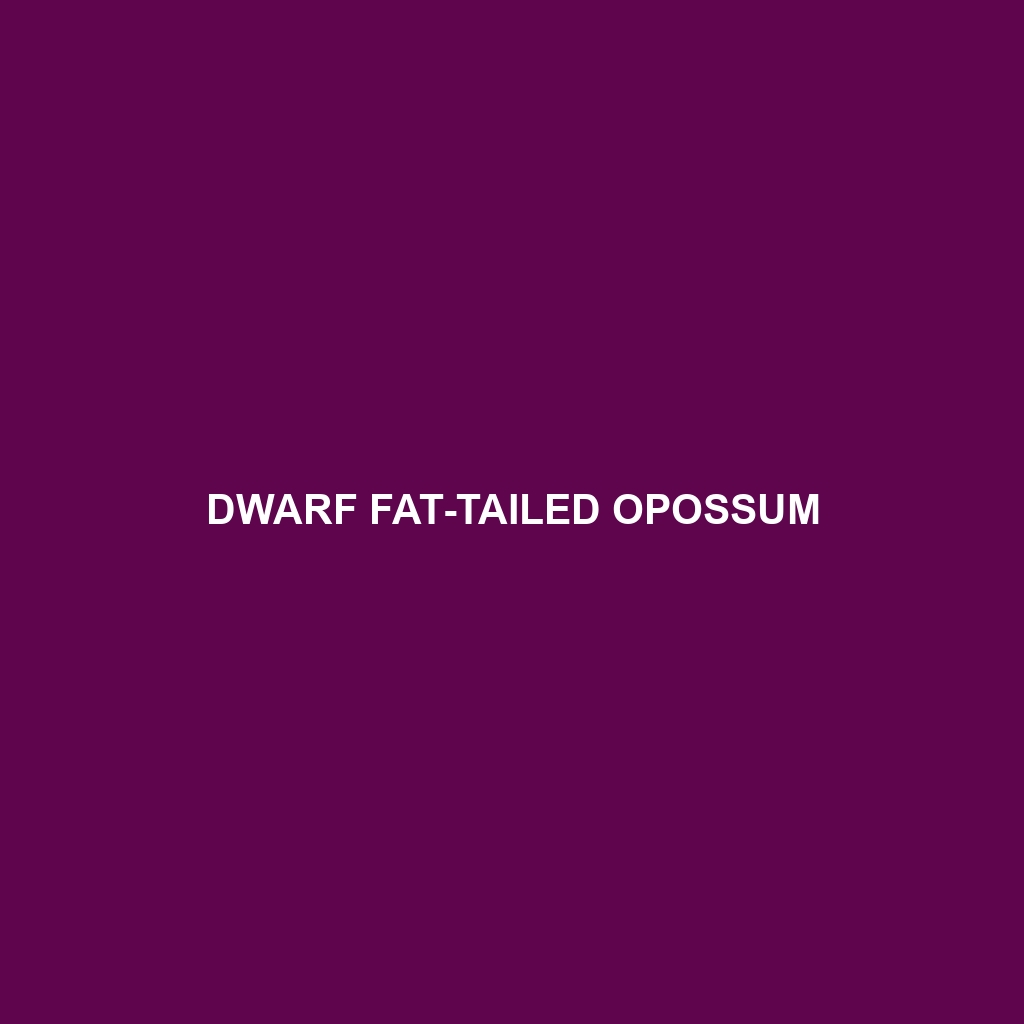Dwarf Fat-tailed Opossum A Comprehensive Overview
The Dwarf Fat-tailed Opossum (Thylamys velutinus) is a small, nocturnal marsupial native to South America. Noted for its distinctive tail, which is used for fat storage, this opossum is a proficient climber and an agile forager. It plays a crucial role in its ecosystem by aiding in seed dispersal and maintaining insect populations.
Physical Characteristics:
Size: This opossum is relatively small, with adults typically measuring between 10 to 15 centimeters in body length, and an additional 8 to 12 centimeters for the tail. They generally weigh between 20 to 40 grams.
Coloration: The Dwarf Fat-tailed Opossum has a soft, velvety fur that ranges in color from gray to brown on the dorsal side, while the ventral side is usually a lighter cream or white. Their tails can vary in color from pale pink to grayish-brown.
Special Features: One of the most notable features of this opossum is its tail, which can store fat, providing an energy reserve during periods of food scarcity. Their prehensile tails also aid in climbing and maneuvering through their arboreal habitats.
Behaviors:
Social Interactions: Dwarf Fat-tailed Opossums are generally solitary creatures, coming together only for mating. They are nocturnal and spend their nights foraging for food while resting in nests during the day.
Feeding Habits: These opossums have an omnivorous diet, feeding on a variety of insects, small vertebrates, fruits, and seeds. Their opportunistic feeding habits help them to adapt to the availability of resources in their environment.
Ecological Roles: Acting as both predator and prey, they help control insect populations and disperse seeds through their droppings, promoting plant growth and forest regeneration.
Habitats:
Natural Habitat: The Dwarf Fat-tailed Opossum is typically found in dry forests, shrublands, and savannas across South America, particularly in regions of Brazil, Paraguay, and Argentina. They prefer areas with ample ground cover and abundant food sources.
Adaptations: Their nocturnal nature and arboreal lifestyle help them avoid many predators. Their strong limbs and prehensile tails enable them to navigate and forage in trees efficiently.
Conservation Status:
Threats: While not currently listed as endangered, the Dwarf Fat-tailed Opossum faces threats from habitat destruction due to agricultural expansion, deforestation, and urbanization. Climate change also poses a potential risk by altering their habitats and food availability.
Conservation Efforts: Efforts to preserve their habitats through protected areas and sustainable land-management practices are crucial in ensuring the survival of this species. Research into their ecological roles and population dynamics can further aid in conservation strategies.
Fun Facts:
Fat Storage: The tail of the Dwarf Fat-tailed Opossum can swell significantly as it stores fat, which helps them survive during lean periods when food is scarce.
Hidden Pouches: Unlike many other marsupials, females of this species lack a well-developed pouch. Instead, they have a simple skin fold under which they carry their young.
Agile Climbers: Their adept climbing skills allow them to escape ground predators and access a diverse range of food sources in the treetops.
The Dwarf Fat-tailed Opossum is a fascinating example of marsupial adaptation and resilience, playing a vital role in the ecosystems of South America. By understanding and protecting this unique species, we can ensure that it continues to thrive in its natural habitat.
